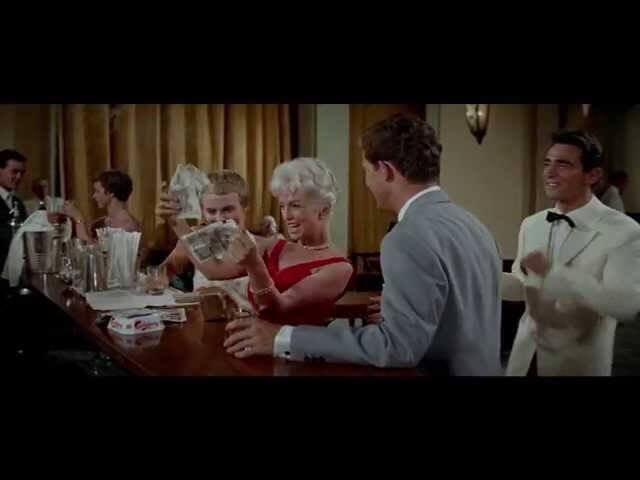An overlooked gem from Otto Preminger, king of the best-seller adaptation

Every day, Watch This offers staff recommendations inspired by a new movie coming out that week. This week: With both Gone Girl and Left Behind opening in theaters, we look back on other adaptations of books that went to No. 1 on The New York Times Best Seller list.
Bonjour Tristesse (1958)
No discussion of best-seller adaptations is complete without a mention of Otto Preminger, who spent a good chunk of the 1950s and 1960s cranking them out at a steady clip. Some became bona fide classics (like Anatomy Of A Murder), while others have faded from public consciousness along with their source material.
Which brings us to Bonjour Tristesse. Françoise Quoirez was 18 when she wrote her debut novel; published under the pen name Françoise Sagan, it became an overnight sensation in France, with the English translation hitting the top of The New York Times fiction best-seller list in the summer of 1955. Preminger—who produced his own films—picked up the rights soon thereafter. To write the script, he hired Arthur Laurents, a Broadway specialist (West Side Story, Gypsy) who’d also written the screenplays for Alfred Hitchcock’s Rope and Max Ophüls’ Caught.
Preminger’s Bonjour Tristesse is an unsentimental but sensitive coming-of-age movie with the tricky flashback structure of a modern thriller. Set mostly on the French Riviera, the movie centers on Cécile (Jean Seberg), a 17-year-old who leads a decadent beachside life with her playboy father, Raymond (David Niven, perfectly cast), and his rotating assortment of much-younger girlfriends.
“We have great fun, don’t we?” says Raymond—whom Cécile only ever addresses by his first name—partway through the movie, with more than a hint of desperation. They have a mutually enabling relationship; Cécile’s independence allows Raymond to never act like a parent, while Raymond’s indifference means that Cécile is neither treated like a child nor expected to act like an adult. Unsurprisingly, Cécile feels betrayed when her father does the unthinkable and starts a serious relationship with a woman his own age, Anne (Deborah Kerr).
Preminger came into Bonjour Tristesse with something to prove. His previous film, an adaptation of George Bernard Shaw’s Saint Joan, had been a rare critical flop, with the teenage Seberg—who’d beaten out 18,000 hopefuls for the title role—singled out for the harshest criticism. Seberg did not have a lot of range or experience as an actor. What she did have, however, was an unvarnished presence; even if her line readings often sound flat, they never sound less than genuine. She was eminently filmable.
The soon-to-be directors of the French New Wave nursed crushes on her. François Truffaut declared her ”the best actress in Europe.” Jean-Luc Godard—who would draw inspiration from Bonjour Tristesse’s color palette and distinctive use of long, widescreen takes for Contempt—cast her in Breathless, a movie that he imagined as an unofficial sequel to Bonjour Tristesse. “I could have taken the last shot of Preminger’s film,” he would later say, “and started after dissolving to a title: ‘Three years later.’”
Availability: Bonjour Tristesse is out of print on DVD, but can be obtained from Netflix or your local video store/library. The film can also be rented or purchased from the major digital outlets.